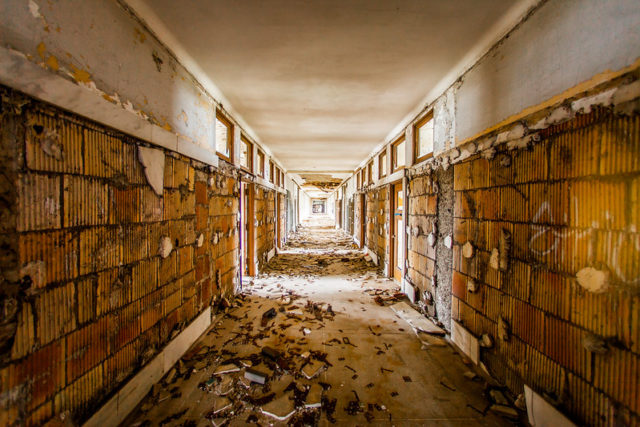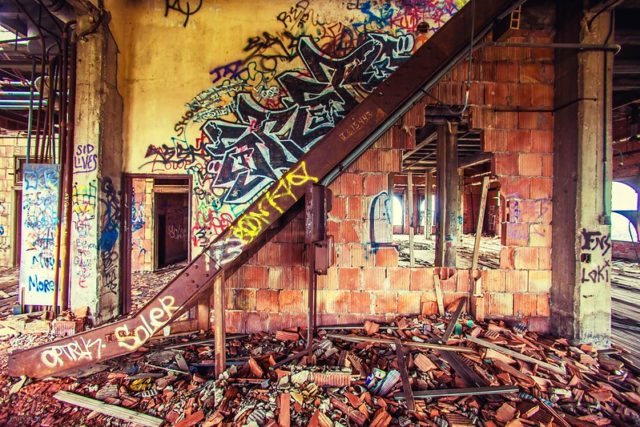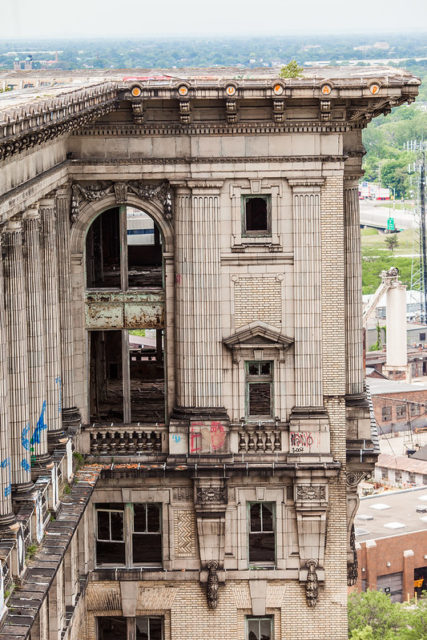Michigan Central Station is symbolic of the rise and fall of the city of Detroit. What was once the heart of the Motor City, moving its citizens in and out of the city for 75 years, is now completely abandoned.
It shared a connection to Grand Central Station

Detroit’s primary railroad wasn’t always run out of Michigan Central Station. From 1884 to 1913, Michigan Central Railroad ran out of a depot located in downtown Detroit. However, by the early twentieth century, it was clear that the use of rail travel was increasing and as such, it was decided that a newer, bigger, train station should be built.

The architect firms of Warren & Wetmore of New York and Reed & Stem of St. Paul, Minnesota designed Michigan Central Station. These were the same firms that teamed together to design Grand Central Station in New York City.

On December 26, 1913, a fire destroyed the downtown train depot, forcing Michigan Central Station to be rushed into service early. Michigan Central Station was formally dedicated nine days later, on January 4, 1914.
It resembled ancient baths

Michigan Central Station consists of a three-story train depot and an eighteen-story office tower. The station was designed as part of the popular “City Beautiful” urban planning movement that took inspiration from the 1894 World Fair in Chicago. This movement aimed to beautify urban spaces. There were some initial critics who didn’t like the look of the new depot, but for most people living in Detroit, Michigan Central Station was an object of great civic pride.

When it was first opened, Michigan Central Station slightly resembled an ancient temple. The main waiting room was modeled after the public baths of ancient Rome. It once featured marble floors, bronze chandeliers, and Corinthian columns. The main room also featured 54 and-a-half foot ceilings and huge arched windows.

The train depot itself once held the ticketing offices, the main waiting room, restaurants and other facilities – including a drugstore, cigar shop, and barbershop. There was also a men’s smoking room and a women’s reading room beyond the waiting room.

The office tower above the train depot had more than 500 offices dedicated to the railroad’s business, including auditors, personnel and other departments. At one point, the halls throughout the office space above the depot were lined with white marble and terrazzo floors.
The beginning of the end

The Michigan Central Station was seen as a physical metaphor for Detroit’s growing potential for the first 2o years of its life At the start of the First World War, more than 200 trains left Michigan Central Station each day.

Toward the middle of the twentieth century, rail travel began to decrease all over the country. Luckily, passenger volume did not fall off immediately. During the Second World War, the train station was heavily used by the military.

Widespread societal changes greatly impacted the Michigan Central Station after the Second World War. After the War, more people owned their own automobiles, and passenger trains in general were falling into decline. Highways and air travel were becoming the more standard way to get around.

The train business was greatly struggling. An attempt was made to sell the Michigan Central Station in 1956, but there were no takers. In April 1967, the once-beautiful massive main waiting room was closed. Slowly, the additional amenities associated with the station also began to shut their doors.

In the 1970s and 1980s, Amtrak and the US Government attempted to keep the train station alive. However, by the late 1970s, there were fewer than a dozen trains coming and going from Michigan Central Station each day.

On January 5, 1988, the last train left Michigan Central Station. The station’s size and location, mixed with an increase in car and plane travel and the population decline in Detroit, meant that the once grand station could survive no longer.
Abandoned for 30 years

The building was bought in December 1989 by a man named Mark Longton Jr., who had hopes of turning it into a hotel and casino. However, the vision never came to be and by the 1990s, the old Michigan Central Station was wide open to looters and trespassers.

In 2001, billionaire Manuel Moroun, who owns the Ambassador Bridge that connects Detroit to Windsor, Ontario, Canada, unveiled his plan to restore the building as an international trade and customs center – a plan which, of course, did not happen.

In 2003, Mayor Kwame Kilpatrick announced that the old Michigan Central Station had been selected to be renovated into Detroit’s new police headquarters. That plan also fell through, as the plan’s budget would be too expensive and the building was located far from the city’s courts and jails.

Although the building has stood vacant for over 30 years, it has attracted much attention through popular culture. The building has been featured in several films, including Batman vs Superman: Dawn of Justice (2016), and rapper Eminem’s movie 8 Mile, and in his music video for the song “Beautiful.”

More from us: Packard Automotive Plant: A Symbol of Detroit’s Economic Decline
In 2018, it was announced that the building had been sold by the Moroun family to Ford Motor Company. The current plan for the building is for it to become the anchor of a Ford Detroit campus focused on developing self-driving vehicles. Renovations are set to start in 2022. Only time will tell if this plan works or if the once-beautiful building will continue to rot.
